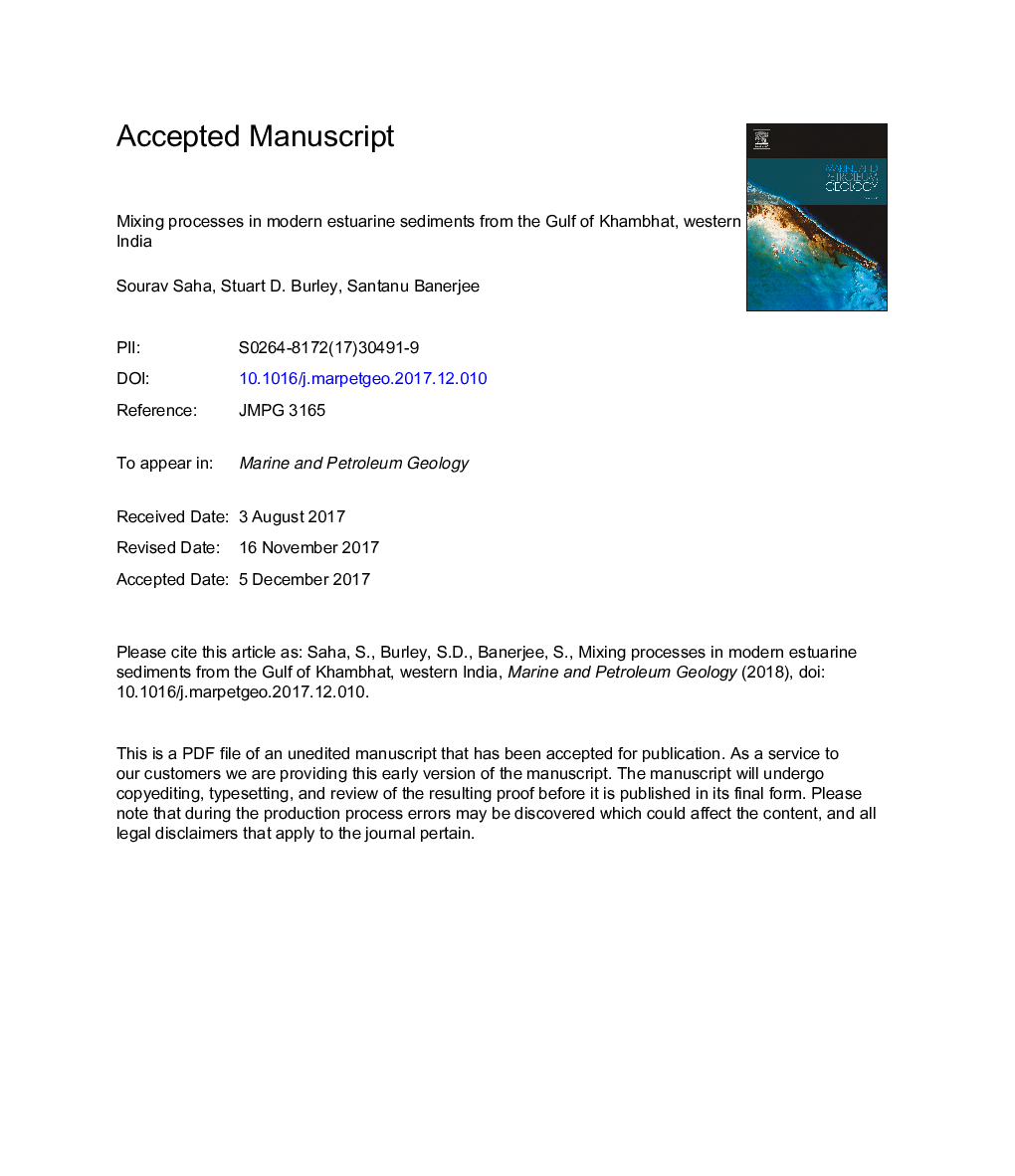| Article ID | Journal | Published Year | Pages | File Type |
|---|---|---|---|---|
| 8909215 | Marine and Petroleum Geology | 2018 | 102 Pages |
Abstract
The two end-member detrital compositions, plutoniclastic and volcaniclastic, are mixed in the macro-tidal estuaries. Mixing of sediment takes place where fluvial currents and tidal flows interact and the proportion of mixing varies systematically from outer to central to inner estuary. A high degree of mixing of felsic sediments with Deccan basalt derived sediments takes place in the outer estuary resulting in felsic:mafic ratios of â¼40:60. Sediments in the central estuaries (â¼65:35) and in the fluvial-dominated inner estuaries (â¼90:10) are characterised by moderate to minor degrees of mixing. The mixing in estuaries is systematic and is reflected in both the mineralogy and geochemistry of the sediments. Provenances of ancient estuarine successions should therefore be interpreted with great care incorporating awareness of the mixing processes which influence sediment compositions to different degrees in estuaries, especially those characterised by strong tidal currents.
Related Topics
Physical Sciences and Engineering
Earth and Planetary Sciences
Economic Geology
Authors
Sourav Saha, Stuart D. Burley, Santanu Banerjee,
